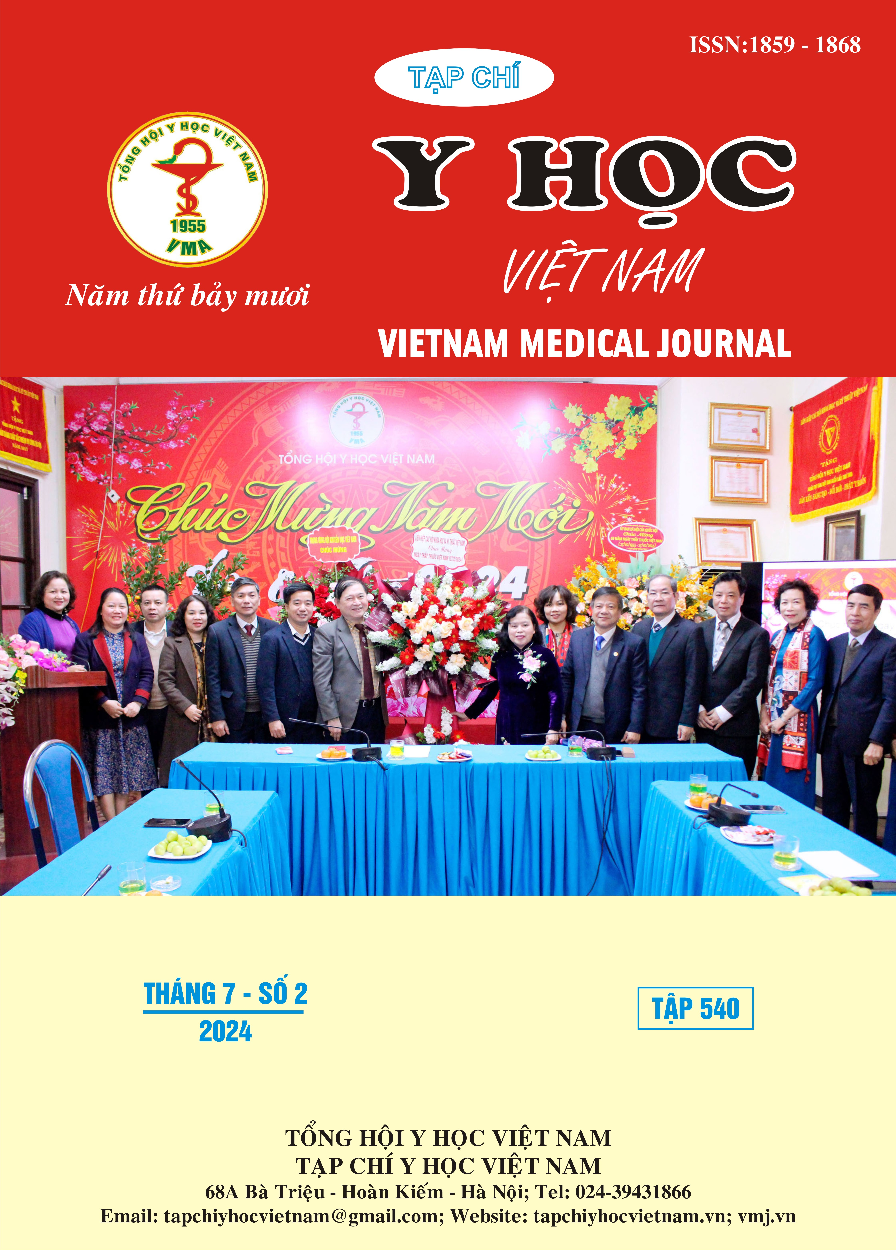THE RESULTS OF IMPLEMENTING IN VITRO FERTILIZATION (IVF) AT VINH PHUC OBSTETRICS AND PEDIATRICS HOSPITAL 2020 – 2023
Main Article Content
Abstract
Objective: Describe the results of implementing in vitro fertilization (IVF) at Vinh Phuc obstetrics and pediatrics hospital 2020 – 2023. Subjects and methods: The study was conducted 55 husband and wife patients implementing IVF at Vinh Phuc obstetrics and pediatrics hospital 2020 – 2023, using a cross-sectional descriptive research design. Results: The wife average age was 34.13 ± 4.83 (the youngest was 26 and the oldest was 46). The percentage of the infertility duration which was less than 2.5 - 5 years was 43.6%, the rate of infertility I was 12.7% and 100% patients used antagonist regimen. The activation success rate was 94.5%, of which, the rate of 10-20 oocytes is 40%, > 20 oocytes: 3.6% and the average number of oocytes is: 9.27±5.9. The average fertilization rate was 67.92 ± 31.34. The average number of fertilized oocytes was 6.00 ± 4.71 with the highest of 18 oocytes. The average number of embryos obtained on day 3 was: 5.73 ± 4.55, the highest embryos achieved was 18 and 100% embryos were frozen. In the stage of preparing during the process of embryo transfer, the endometrial thickness of 8 to 14 mm rate was 94.6%. Pregnancy rate: clinical pregnancy/number of IVF procedures was 23.6%, clinical pregnancy/number of transfer cycles was: 39.4%. The rate of biochemical pregnancy was 29.1%. There have been 11 healthy children born; 3 mothers are pregnant with gestational age ranges from 20-25 weeks. Conclusion: From 2020 to 2023, IVF technology gave clinical pregnancy rate of 23.6 %, 11 healthy children have been born and 3 mothers are pregnant. This is the initial success of applying IVF technique at Vinh Phuc Obstetrics and Children's Hospital.
Article Details
Keywords
Vinh Phuc obstetrics and pediatrics hospital, in vitro fertilization, IVF
References
2. Irvine S, Epidemiology of male infertility” , Current theory and Practice of ICSI, edited by Devroey P, Tarlatzis B and Van Sterteghem A. Human Reprod. 1998. 13(1): p. 33-34.
3. Lê Long Hồ, Hội chứng buồng trứng đề kháng với Gonadotropin Y học sinh sản, 2023. 64: p. 24-26.
4. Vũ Minh Ngọc, Đánh giá kết quả của phác đồ dài kích thích buồng trứng trong thụ tinh trong ống nghiệm tại bệnh viện Phụ Sản TW, in Luận văn thạc sỹ Y học. 2006: Đại học Y Hà Nội.
5. Phạm Như Thảo, Nghiên cứu hiệu quả kích thích buồng trứng của phác đồ dài và phác đồ ngắn trong điều trị vô sinh bằng thụ tinh trong ống nghiệm., in Luận án tiến sỹ y học. 2010: Luận án tiến sỹ y học.
6. Zhen, X.M., et al., The clinical analysis of poor ovarian response in in-vitro-fertilization embryo-transfer among Chinese couples. J Assist Reprod Genet, 2008. 25(1): p. 17-22.
7. Nguyễn Khánh Linh, Thất bại làm tổ nhiều lần. Y học sinh sản, 2023. 64: p. 56-61.
8. Nguyễn Thị Huyền Anh, Hồ Sỹ Hùng, Đặng Công Việt, Tỷ lệ có thai cộng dồn các cặp vợ chồng thụ tinh trong ống nghiệm hiến nhận noãn. TC Phụ sản, 2019. 16(3): p. 98-103.
9. Bùi Văn Hiếu, Nghiên cứu kết quả thụ tinh trong ống nghiệm trong hai năm 2010 và 2015 tại Trung tâm hỗ trợ sinh sản Quốc gia, Luận văn thạc sỹ y học. 2017, Trường Đại học Y Hà Nội.


